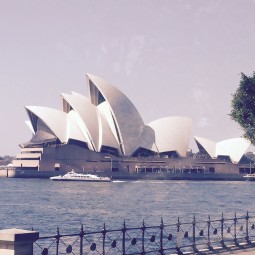
[blockquote line1=”UNESCO World Heritage Committee 2007″]
Sydney Opera House stands by itself as one of the indisputable masterpieces of human creativity, not only in the 20th century but the history of mankind.
[/blockquote]
However, it was nearly so different. Utzon’s design was originally in the discarded pile, until Ero Saarinen the renowned American architect, insisted on going through the rejected entries – having himself arrived later than the other judges and missed a few being considered. As he thumbed the pile of rejects, he stopped at the Utzon design and declared it to be outstanding. The rest, as they say, is history.
Utzon’s design was conceptual and, at that point, he had no certain knowledge that it could be built. After extensive testing, Utzon and engineer Ove Arup developed an external design based on the complex sections of a sphere – but the spectacular plans for the interior of the completed shells he planned were unable to be realised.
In mid-1965 a change of Government questioned the viability of the designs and stopped work, forcing Utzon to withdraw as chief architect in 1966. Poor Jorn Utzon left Australia with his family – he thought he would never see his masterpiece again.
However, a long time later, in 1999, the New South Wales Government and Sydney Opera House Trust reunited the man and his now finished work. Eventually, after a number of approaches, Utzon agreed to develop a set of design principles to act as a permanent reference to guide all future changes to the building.
So why do I mention this?
Yesterday Angela Lockwood and I spent the day at The Housing Trust in Wollongong at the invitation of the CEO and Senior Team. What we talked about was the impact and effect of legacy on the life of an organisation from energetic and passionate beginnings to the important and invaluable challenge of taking pioneering initiative and turning it into a lasting legacy.
Angela shared her own journey and we used the word ‘pioneering’ to describe the work North Star Housing and Oasis have done together to shape and change the internal culture of the organisation. This took the form of setting out on a concept and making it real, supported by key players within the organisation who agreed a destination without always knowing how we would get there; it took collaborative effort between different ‘specialists’ to make it happen and most of all it took trust.
Yesterday, in telling the narrative, Angela and I were able to reconnect with the level of trust and relationship required to build something that has a lasting legacy and which must also be revisited and renewed if it is to keep its relevance and energy for the challenges ahead. What we leave behind and the experiences we have in building a legacy, whether than be in the form of something we can see or something we can feel, is a profound component of the human condition and we have the power to shape those for the betterment, or not, of humankind.
What I have learnt from the Utzon story, and from my experience in Australia so far, is that regardless of how fractious creating something with others may be, how disruptive and uncertain, human endeavour and spirit will prevail and that narratives of organisational change from a steel town in Teesside can inspire, encourage and motivate a steel town on the other side of the world.
Remember a masterpiece takes great vision, determination and trust in those involved.










